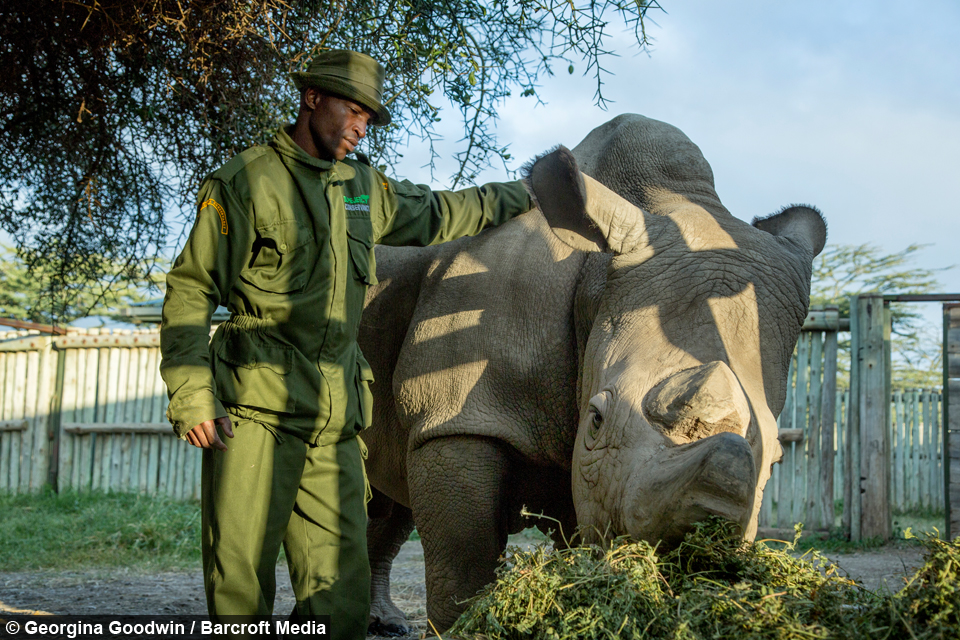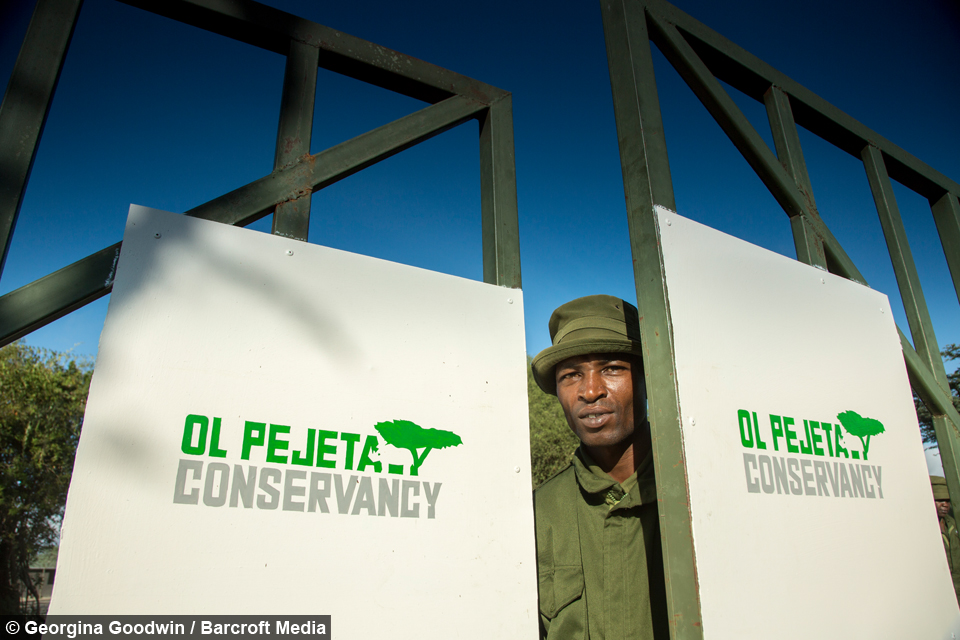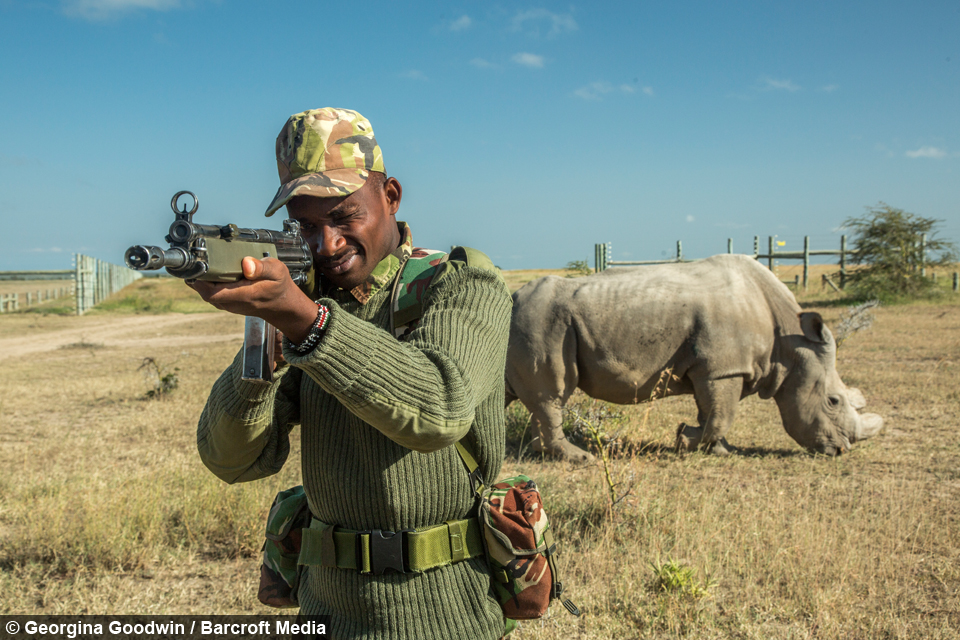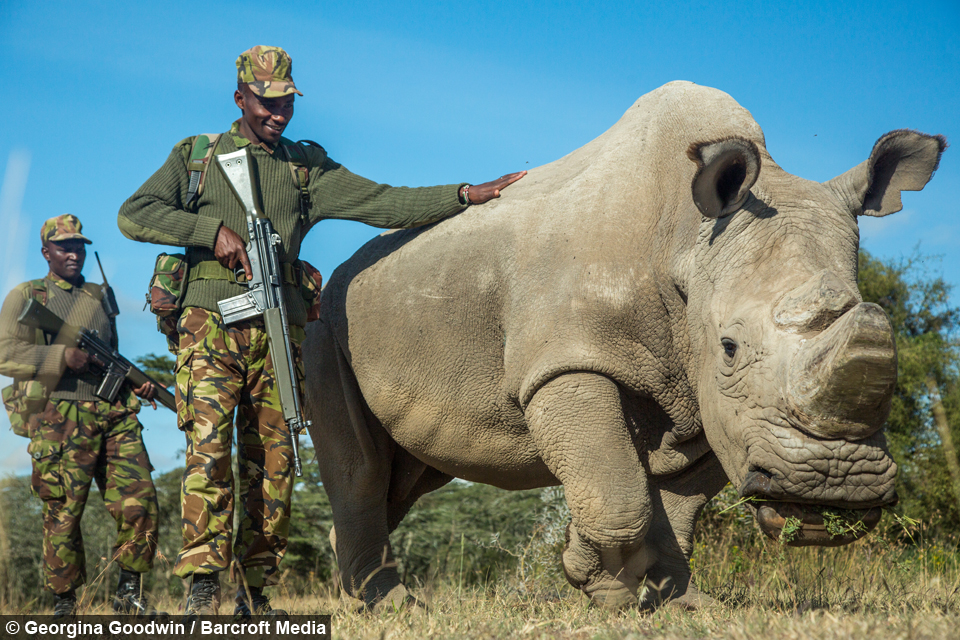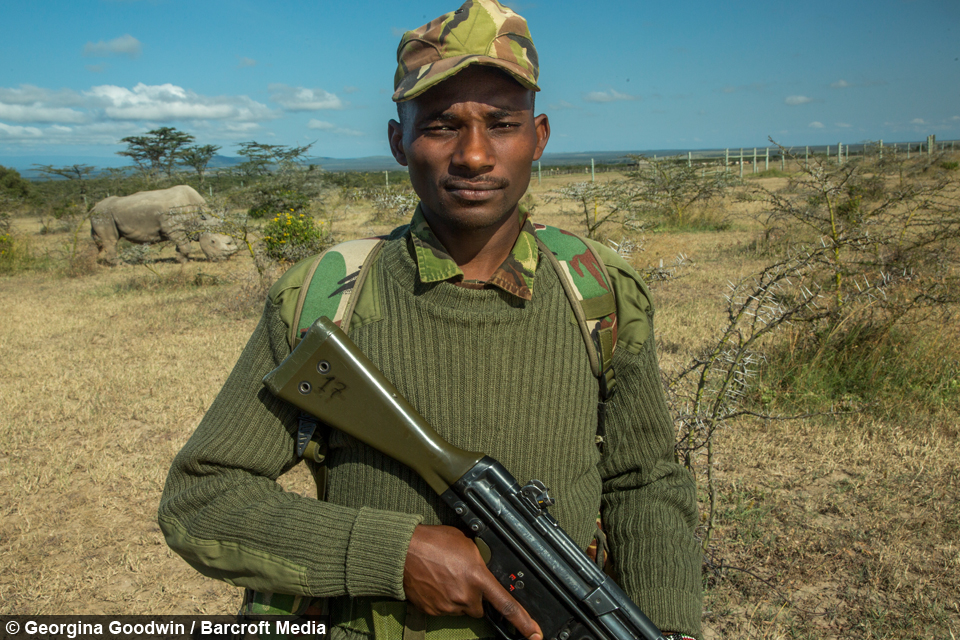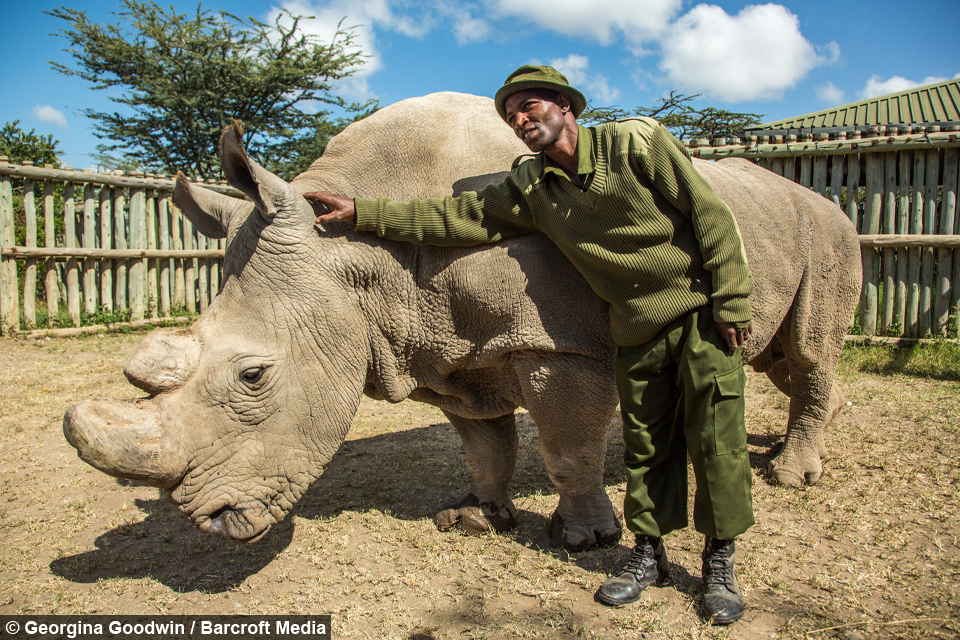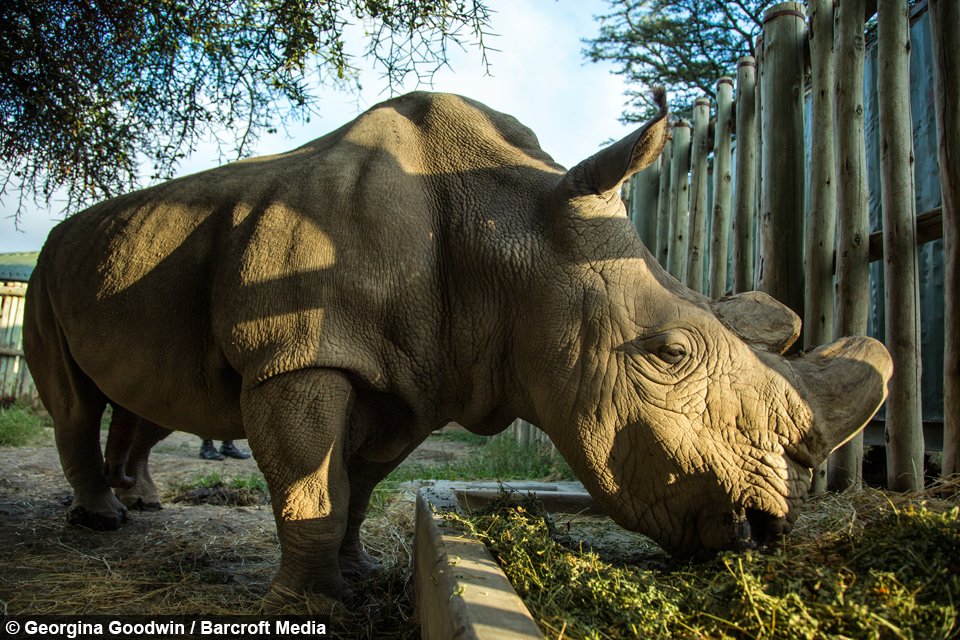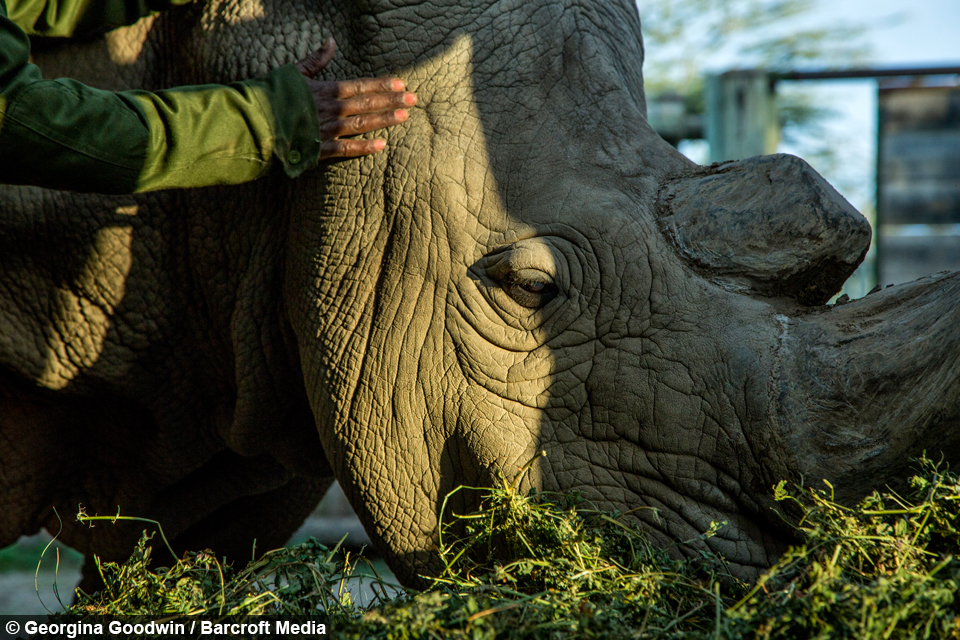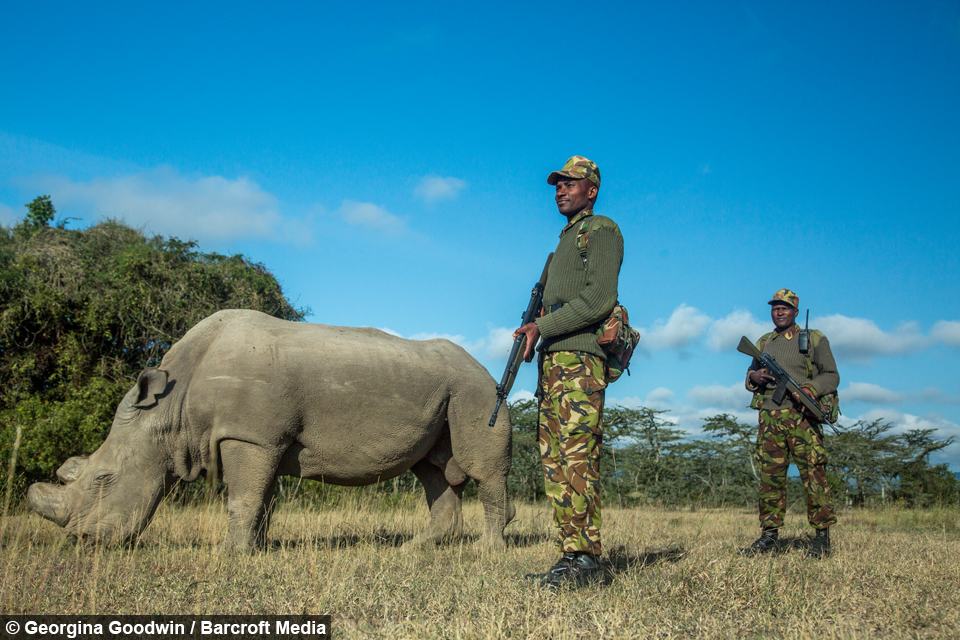Sudan: Last Male Northern White Rhino's Days Are Numbered
By Amanda Stringfellow @amanda_l_s
Scroll down for the full story
Videographer / Director: Matt Goldman
Producer: Amanda Stringfellow, Chloe Browne
Editor: Joshua Douglas
Sudan is the last of his kind, and at the age of 42 he doesn’t have much time left.
After 35-years in captivity Sudan is living out his final years at Ol Pejeta conservancy in central Kenya's Laikipia, surrounded by a team of armed guards.
With his back legs weakening and his sperm count lowering the chances of Sudan being able to mount a female and sire more offspring diminishes daily.
CEO of Ol Pejeta Conservancy, Richard Vigne, said: “Sudan is quite an old animal as far as rhinos are concerned - he’s an old animal and he’s going to die soon, I think that’s the reality.”
With breeding programs proving unsuccessful, the three-ton animal’s death could mean extinction for the northern white rhino.
Sudan was born in South Sudan, but was caught in the Shambe region when he was just one-year-old and shipped to the Dvůr Králové Zoo in the Czech Republic.
In December 2009, he was moved to the Ol Pejeta Conservancy with two female northern white rhinos and another male, for a "Last Chance To Survive" breeding program.
The other remaining male has now since passed away –meaning ageing Sudan is now the last male in the world.
Three of the five northern white rhinos left live at Ol Pejeta and it was hoped Sudan would be able to mate with the females Fatu, 15 and Najin, 25.
But so far all attempts have failed.
Richard said: “It really came to a head with the death of Suni last year, the other remaining male northern white rhino – he was much younger than Sudan.
“These animals have been kept in captivity for a long time and there's been little success at breeding northern whites in captivity.
“Sudan is 42-years-old and the quality of his sperm is not particularly great.
“His ability to mount a female is almost non-existent because of his problems with his back legs.
“It was always going to be a shot in the dark. We had the last remaining potentially reproductively viable northern whites left in the world and to recover a species from that level was always going to be a long shot.”
The majestic animal is under guard 24-hours-a-day to protect him from poaching, and his horn has been filed down to further lower the risk of attack.
But the rare rhino has formed a strong bond with his gun-carrying guards and keepers.
Rhino Keeper Zacharia Mutai said: “Sudan loves to be rubbed under the belly, and scratched behind the ears, it makes him feel relaxed.
"When we call his name he often comes to us.
“He’s really calm because he’s used to us, but animals are unpredictable they can charge and they can attack, so even I have to be careful.”
Armed Guard John Mugo spends his days in the paddock with the rhinos, carrying a G3A3 assault rifle.
John said: “Sudan is special because he’s the last one of his kind surviving in the whole universe.
"We guard Sudan 24-hours a day around the clock to protect him form poaching.
“He’s under threat because of his horn, we use guns to ensure the security of the rhinos.”
The guards change shift at 6am in the morning and 6pm at night, ensuring the endangered animals are protected at all times.
But Richard believes there is still hope for the northern white rhino.
With the rhinos failing to reproduce naturally, Richard believes artificial methods could still save the sub-species.
The team are now looking at using southern white rhinos as surrogates to carry northern white fertilised eggs to create a pure bred northern white calf.
“The problem with that is the technology to do it is yet to be developed in rhinos, so we have to develop the technology and the ability to do it with rhinos before
we try to do it on the last remaining northern whites,” Richard explained.
Another option is artificially inseminating southern white rhinos to create cross-bred offspring.
Whilst Richard admits the current population of northern white rhinos could die out - he believes developments in science will bring them back from extinction in the future.
“The chances are the living animals that we have on the planet today will die off and disappear before we are able to develop the techniques to recover the species,” Richard said.
“But we’ll have preserved enough of the genetic material that in the future we could create calves and live animals on the ground.
“There’s quite a few cell cultures from the various different rhinos that have existed in zoo conditions which are now in storage.
“In time, when the science allows it – we could create egg and sperm cells to create an embryo for implantation in a southern white.
“It’s a scientific process referred to as de-extinction.”
According to the World Wildlife Fund as late as 1960 there were more than 2,000 northern white rhinos in the world – but intense poaching has brought the sub-species to the brink of extinction.
Richard said: “Humans are 100% to blame for what’s happened to rhino populations across the planet.
“Like every rhino the northern whites face demand for their horn.
“As demand has increased the incentive for people to kill rhino to supply horn has increased.
“The northern whites we have here are semi-domesticated, their used to humans and therefore their easily approachable.
“There’s huge incentive for poachers to kill rhinos illegally, and because their approachable we protect them closely to prevent poaching.
“Rhino horn is worth more than cocaine in the Far East.”
Ol Pejeta are trying to raise funds to ensure the future of the northern white rhino.
To fund the artificial breeding programme could cost between $1million and $4million.
The current campaign is running at www.gofundme.com/olpejeta where people can contribute to help save the northern white rhinoceros.
